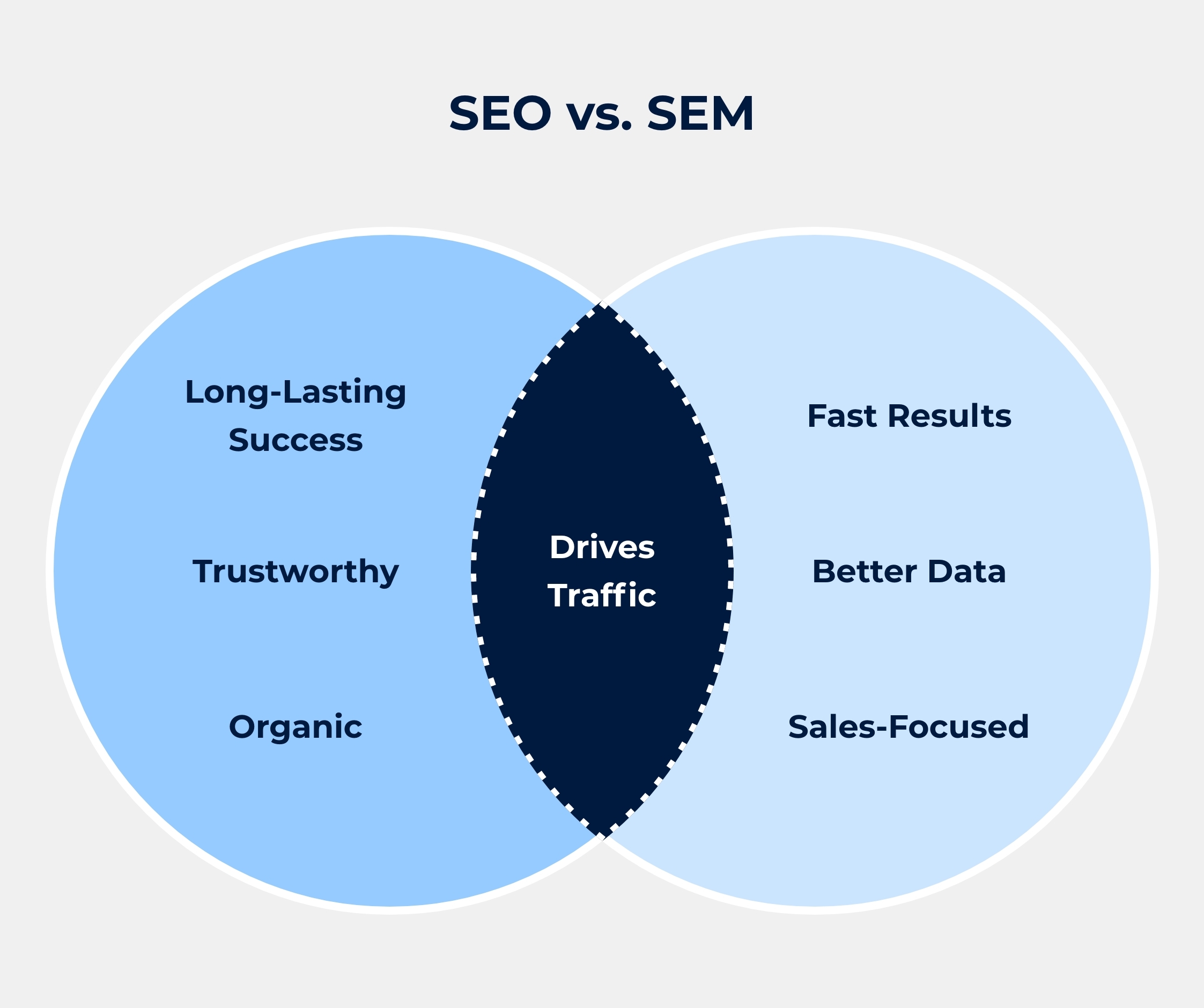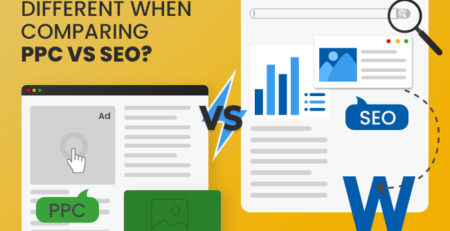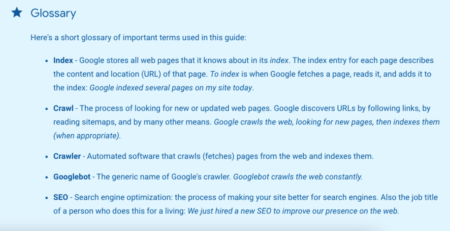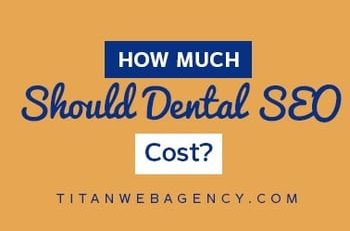How Do Seo And Sem Work Together?
Do you ever wonder how SEO and SEM work together to improve your online presence? Well, you’re in luck because we’re about to dive into the exciting world of search engine optimization (SEO) and search engine marketing (SEM).
SEO focuses on optimizing your website to rank higher in search engine results, while SEM involves paid advertisements to increase visibility. But how do they work in harmony to drive more traffic and boost your online success?
In this article, we’ll explore the powerful partnership between SEO and SEM and unravel the secrets to their combined effectiveness. So get ready to uncover the strategies that can take your online presence to new heights! Let’s get started!
Wondering how SEO and SEM work together? While SEO focuses on optimizing your website to increase organic search traffic, SEM involves paid advertising to drive targeted traffic. The two complement each other, helping you maximize your online visibility and reach. With SEO, you optimize your site’s content and structure, while SEM allows you to target specific keywords and demographics through paid ads on search engines. By using both strategies, you can effectively boost your online presence and attract valuable visitors.
How Do SEO and SEM Work Together?
Search Engine Optimization (SEO) and Search Engine Marketing (SEM) are two powerful digital marketing strategies that work in tandem to boost online visibility, increase website traffic, and drive conversions. While SEO focuses on optimizing organic search results, SEM encompasses paid search advertising. Understanding how SEO and SEM work together is crucial for maximizing your online presence and achieving optimal marketing outcomes.
The Relationship Between SEO and SEM
SEO and SEM are like two sides of the same coin – they both aim to enhance a website’s visibility on search engine results pages (SERPs). However, they employ different tactics to achieve this goal. SEO focuses on optimizing various elements of a website, such as content, backlinks, and site architecture, to improve its organic search rankings. On the other hand, SEM involves using targeted advertising campaigns, such as Google Ads, to bid on keywords and display paid ads on SERPs.
While SEO and SEM are distinct strategies, they are highly interconnected. By combining the strengths of both approaches, businesses can create a comprehensive digital marketing strategy that provides the best possible results. SEO lays the foundation by optimizing a website’s structure and content to attract organic traffic, while SEM complements SEO efforts by targeting specific keywords and driving immediate traffic through paid ads.
The Synergistic Benefits of SEO and SEM
There are numerous benefits to integrating SEO and SEM into your digital marketing strategy. Let’s explore some of the key advantages:
1. Enhanced Visibility
By utilizing both SEO and SEM tactics, you can dominate search engine results pages. While SEO helps your website achieve higher organic rankings, SEM allows you to occupy valuable ad space at the top of SERPs. This dual approach maximizes your online visibility and increases the likelihood of capturing user attention and clicks.
2. Increased Website Traffic
SEO efforts focus on attracting organic traffic by optimizing websites for relevant keywords and improving their search rankings. SEM complements this by instantly driving traffic through targeted paid advertising. By leveraging both strategies, you can significantly increase website traffic and attract a diverse audience.
3. Comprehensive Keyword Strategy
SEO requires careful keyword research and optimization to target the right audience. SEM allows businesses to identify high-performing keywords through paid campaigns, providing valuable insights for their organic SEO strategy. By analyzing the performance of paid keywords, businesses can optimize their onsite SEO to target the most relevant keywords and improve organic rankings.
4. Flexibility and Scalability
SEM provides a level of flexibility and scalability that complements the long-term efforts of SEO. With SEM, you have control over your budget, ad campaigns, and targeting options. This flexibility allows you to adjust your strategy in real-time based on performance metrics and market trends, ensuring optimal results and return on investment (ROI).
Key Takeaways: How Do SEO and SEM Work Together?
- SEO and SEM are both digital marketing strategies that work together to increase online visibility and drive traffic to a website.
- SEO focuses on optimizing a website’s content, structure, and performance to rank higher in organic search results.
- SEM, on the other hand, involves paid advertising through platforms like Google Ads to appear in search engine results.
- By using SEO techniques, a website can improve its organic visibility and attract relevant traffic.
- SEM complements SEO by providing immediate visibility through paid advertising and targeting specific keywords.
Frequently Asked Questions
In the world of digital marketing, SEO (Search Engine Optimization) and SEM (Search Engine Marketing) are two important strategies. While they are different, they can work together to enhance your online presence. Here are some common questions about how SEO and SEM work together:
1. How does SEO help SEM?
SEO and SEM have a symbiotic relationship. SEO focuses on optimizing your website’s content and structure to rank higher in organic search results. When your website is SEO-friendly, it improves the quality score of your SEM campaigns.
Quality score is a metric used by search engines to determine the relevance and value of your website. When your website has a high-quality score, it can lead to lower costs-per-click (CPC) in your SEM campaigns. So, by investing in SEO, you can improve the effectiveness and efficiency of your SEM efforts.
2. Can SEM benefit SEO?
Yes, SEM can provide valuable insights for your SEO strategy. SEM allows you to run paid ads and target specific keywords. By analyzing the performance of these ads, you can gain insights into which keywords are driving the most traffic and conversions.
This data can inform your SEO efforts by helping you identify high-converting keywords. You can then optimize your website’s content to rank organically for these keywords, capturing organic traffic and maximizing your SEO efforts.
3. Are SEO and SEM targeting the same audience?
SEO and SEM do target the same audience – users who are searching for specific products, services, or information. However, the targeting methods for SEO and SEM differ.
SEO aims to target users organically by ranking higher in search engine results pages (SERPs). It relies on optimizing your website’s content and providing valuable information to attract organic traffic. On the other hand, SEM uses paid ads to target specific keywords and reach users who are actively searching for related products or services.
4. How can SEO and SEM complement each other?
SEO and SEM can work together to create a comprehensive digital marketing strategy. By investing in both, you can increase your online visibility from multiple angles.
SEO helps improve your organic rankings, which leads to increased visibility and credibility. SEM allows you to reach a wider audience through paid ads, ensuring your brand is visible to users who may not have found you organically. By combining both strategies, you can maximize your online presence and increase your chances of reaching your target audience.
5. Which strategy should I prioritize: SEO or SEM?
Both SEO and SEM are important for a well-rounded digital marketing strategy. It’s ideal to prioritize both, but the focus may vary depending on your goals and resources.
If you’re looking for long-term sustainable growth, investing in SEO and optimizing your website for organic rankings is crucial. However, if you need immediate results and want to target specific keywords or promotions, SEM can be a valuable tool. Ultimately, finding the right balance between SEO and SEM depends on your specific marketing objectives and budget.
SEO In 5 Minutes | What Is SEO And How Does It Work | SEO Explained | SEO Tutorial | Simplilearn
Summary
SEO and SEM are like two best buddies who work together to help websites get noticed on search engines. SEO focuses on optimizing content and websites to rank higher in organic search results. SEM, on the other hand, uses paid advertising to boost visibility and drive traffic to websites. By combining both strategies, businesses can maximize their online presence and attract more visitors.
When SEO and SEM work together, they create a powerful marketing approach that covers all bases. SEO ensures that websites are optimized for search engines and provide valuable content, while SEM uses paid ads to target specific audiences and drive immediate traffic. By harnessing the strengths of SEO and SEM, businesses can increase their chances of reaching their target audience, driving more traffic, and ultimately growing their online presence. So, remember, SEO and SEM are the dynamic duo that can bring your website the attention it deserves!












